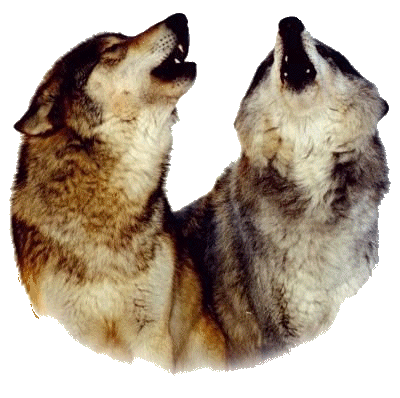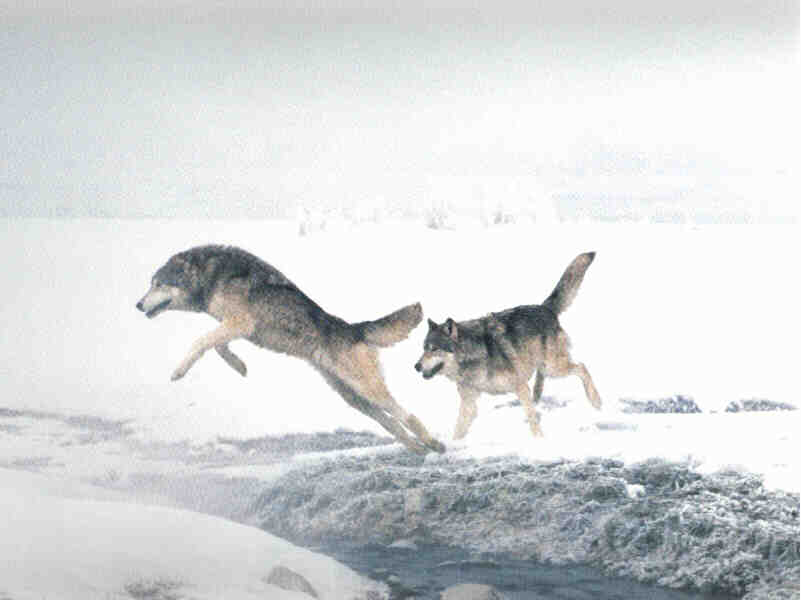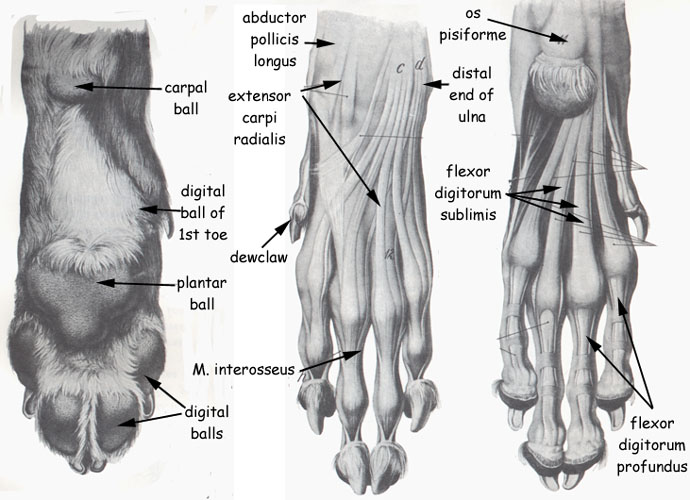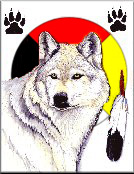|
Site Map
The evolution of Lakota social and political structure from pre-contact through the present with maps of the Lakota Nation.
Traditional Lakota tales of the creation of the universe, the earth and the emergence of life and mankind within it.
Lakota traditional spiritual beliefs, rites and ceremonies, past and present
Traditional Lakota folk tales in English and Lakota.
A guide to the Lakota alphabet and pronunciation with streaming audio. An introduction to Lakota rules of grammar, verb lists and dictionaries (English & Deutsch).
Song structure of Plains music, historical diffusion of songs, dances and regalia on the Plains. Lakota songs to listen to and download.
Current events, national news clippings.
The full complete text of Treaties and U.S. Supreme Court decisions.
Šung'manitu-tanka, the Great Plains or Buffalo Wolf - The nation of wolves and their unique relationship with the Lakota.
Links to Native American sites on the World Wide Web.
|

Šung'manitu-tanka 0yate
|
|
|
|
|

Physical Description
The gray wolf, being the largest member of the Canid family, stands 26 to 38 inches at the shoulder and
has a length of 40 to 58 inches from the head to the base of the tail. The tail can be as long as 20
inches but are usually no shorter than 13 inches. The male is generally 15 to 20 percent larger than
the female.
Their weight can vary in the North American wolves ranging from as low as 40 to as great as 175 pounds.
The average weight is in the range of 60 to 100 pounds.
The skull of the wolf is large and long and tapers forward, averaging nine to eleven inches long and
five to six inches wide. Massive jaws form the foundation to which the strong masseter, or chewing,
muscles attach. Wolves survive by using their legs and their teeth. The wolf is a coursing predator,
so its eyes are on the front of its skull. The ears are large to capture sounds and they can be moved
to scan and focus on sounds from different directions. The jaws have canines, sharp carnassials for
cutting meat, and molars for crushing bone with very strong jaw muscles. All these characteristics
are reflected in the skull.
Wolves tend to increase in size from south to north generally following the Bergmann's rule of
increased body size from south to north. (However, the wolves in the high Arctic are an exception
to the rule, and are smaller than those found in Northern Alaska and Canada.)
Of 169 nuisance wolves (those causing damage to property or livestock) killed in Alberta
between 1972 and 1979, the average weight of the wolves was 99 pounds.
In general, the wolf looks like its distant cousin the dog with the exception of longer legs and
larger paws. One major difference anatomically speaking is a pre-caudal gland on the upper surface
of the tail, a feature totally absent in all domestic dogs.
The gray wolf has a broad face, which often has a broader appearance due to the ruff of fur below
its ears. Their eyes are usually a golden-yellow color, and shine a greenish-orange at night.
A wolf's body is built for travel. It's chest is narrow to allow it to push off more easily,
especially through deep snow.
The coat of the wolf tends to be very thick and fluffy, especially in the northern regions where
it gets colder in the winter, as compared to their southern counterparts which tend to be more
sparse. The wolf has a double coat of fur and actually has three capes. Long guard hairs on top,
which can be as long as four inches, work like an umbrella to help shed moisture like a raincoat.
Their underfur keeps the wolf warm in the cold months and the wolf sheds the undercoat in the summer.
This is particularly useful in locations such as the Mexican desert where the wolf can withstand
temperatures from -60 degrees to 115 degrees. That's a difference of 175 degrees! Thick winter
coats are grown in the fall, which tend to add 1/3 to their bulk. They slowly shed their thick
winter coats slowly in the spring. The females generally lose their coats more slowly than their
male counterparts. The wolf's mask is made to draw attention to the eyes since eye contact is so
important with the wolf. The way the fur falls around the eyes accents the eyes, making them look
much larger than they are.


Color
Wolves' fur is many different colors. In 1944, Stanley Young wrote "The color of the North American
wolves... varies greatly, so much so that it is relatively unimportant for the scientific description
of the wolves." Even a wolf that generally appears gray really has a coat of many colors. White,
black, gray, and brown hairs are intermingled, with darker fur usually predominating along the center
of the back and tail. The wolf's underside, legs, ears, and muzzle are often tawny. Very old wolves
tend to be grayer than younger ones. The colors of a wolf's fur can make it hard to see in its natural
habitat. The colors of the fur may blend in with background colors in the habitat and cause a wolf
to "disappear." Wolves that spend a lot of time in dark forests often have dark fur. In places where
the plants are many different colors, the fur of the wolves is often many different colors. The
ears are also highlighted to be seen against a dark or light background. The edge of the wolf's
ears are usually highlighted for contrast against dark, and the inside of the wolf's ears are dark
for contrast against light. It is also fairly common to have variations in color in one litter.
Colors can range from pure white to all black.

Teeth
The jaws of a wolf are very powerful. They are twice as strong as a German Shepherds' jaw, exerting
pressure as much as 1,500 lbs per square inch according to Barry Lopez in Of Wolves and Men.
Out of the wolf's forty-two teeth, forty help the wolf in securing its prey. The configuration of
teeth in a wolfs' mouth is as follows: The upper jaw has 6 incisors, 2 canines, 8 premolars, and 4
molars. While the bottom jaw has 6 incisors, 2 canines, 8 premolars, and 6 molars.
The incisors at the front of the jaw are used to cut the flesh of their prey. The largest teeth are
the canines, or fangs, which may reach two and a quarter inches in total length, including the portion
imbedded in the jaw, pierce into the flesh to hold their prey. The premolars and molars are used for
slicing and grinding the food. The last premolars in the upper jaw and first molars in the lower jaw,
also know as the carnassials, are designed especially to slice and shear the flesh. The last molars
are used for grinding and pulverizing the food prior to digestion.
Voice
Wolves make four types of sounds: howl, bark, whimper, and growl. Howling is the most familiar wolf
vocalization to everyone. When wolves howl together they harmonize, rather than howl the same note,
creating an impression of more animals howling than actually are. Wolves don't need to stand to howl.
They can howl lying down or sitting. Apparently, wolves howl to assemble the pack, especially before
and after the hunt; to pass on an alarm, especially at the den site; to locate each other in a storm
or in unfamiliar territory; and to communicate across great distances. There is no evidence that wolves
howl at the moon, or more frequently during a full moon. Wolves only infrequently bark, and it is a
quiet "woof" more often than a dog-type bark. They do not bark continuously like dogs but woof a few
times and then retreat, as for example when a stranger approaches the den. Barks reported from the
field are associated with a pack's being surprised at its den and an animal, usually the female,
rising to bark a warning. Growling is heard during food challenges and, like the bark, is part of
threat behavior or an assertion of rights in some social context. Growling is more common among pups
when they're playing. Pups also growl when they jerk at the ruff of a reclining adult, and comically
will even try to growl adults off a piece of food. Another type of growl is a high-pitched one that
begins to sound like a whine and often precedes a snapping lunge at another wolf. Perhaps the most
interesting sounds are the whines and high-pitched social squeaks associated with greeting, feeding
the pups, play, pen pacing and other situations of anxiety, curiosity, and inquiry. They are the
sounds of intimacy.
Wolf Senses
It has been stated that the wolf possesses sharper vision, hearing, and smell than the domestic dog.
Most wolf biologists agree that the most acute of the wolf senses is that of smell.
Smell
The wolf's sense of smell is about 100 times better than a human's. It uses its sense of smell more
than anything else to find prey, with the ability to smell prey before it can see it, more than a
mile away if the wind is right. A wolf's nose can smell things that your nose can't. Like your nose,
the inside of a wolf's nose contains moist surfaces that "catch" smells in the air, however the area
receptive to smell in a wolf nose is 14 times greater than that of a human. The wolf's nose has about
five times more surface area than yours does, so it can catch more smells from the air than you can.
It can even sense the presence of an animal three days after it's gone! The nose itself is not five
times larger than a human nose. For all the extra smelling surface to fit inside, it must be wrapped
and folded many times. An experiment was performed at one time with covered trays of food to test
the relative senses of smell between wolves and dogs. What required only five minutes for the wolves
to determine which tray contained food took domestic dogs over an hour to discover.
Hearing
The sense of smell is probably the most acute sense the wolf has next to hearing. It is believed
that the upper range of a wolfs' hearing is upwards of 80 kHz. The upper range of humans is only 20
kHz. It is stated that a wolf can hear up to 6 miles away in forest and 10 miles in open areas,
including some high-pitched sounds that even a human can't hear, in the range where bats and porpoises
produce sound. Even when it sleeps, a wolf's ears stand straight up so it can catch sounds made by
other animals at all times.
This helps the wolf catch prey, and lets it know when danger is near. Their large, pointed ears act
like big scoops to catch lots of sound. Unlike humans, wolves can easily tell what direction sound
is coming from by turning their ears from side to side. The direction the ears are pointing when the
sound is loudest tells the wolf which direction the sound is coming from, which can help them locate
rodents under a snow pack.
Sight
The wolf relies on its sense of hearing as well as smell more so than sight.
Their vision is comparable to that of humans. The wolfs eyes lacks a foveal pit.
A depression at the back of the eyeball. This is what is used to focus at greater
distances. It is believed that they can not distinguish much beyond 100 to 150 feet.
This is possibly one reason why the wolf mask accents their facial features and ears so
greatly. Their myopia evidently stems from the absence of the fovea centralis, the tiny
pit at the back, center of the retina which, in humans, primates and some other animals
provides the point of sharpest vision. Just how clearly a wolf sees when looking directly
at an object is, of course, impossible to know, but it seems evident that beyond a short
distance their vision must be somewhat blurred, rather like that of a photograph taken with
a wide-open lens at a slow shutter speed, as opposed to an exposure taken with the smallest
lens aperture at a fast speed. Nevertheless, wolves can see shapes and, especially, movement
over long distances, and their peripheral vision is extremely accurate. They are able to detect
even the slightest movements of very small animals, such as a mosquito, at a distance of more
than ten feet and the movement of larger animals at considerable distances. There is some
controversy as to whether wolves see in color or black and white. Regardless, it is unlikely
that they see the various hues of the spectrum as humans see them, because the physical
makeup of the eye is different. Nighttime vision for wolves is many times better than human
vision in the day or night. Wolves can actually see much better and even much more clearly at
night. The eyes of the wolf are like most predators, with a sight-field of nearly 180 degrees
and pointed forward.
Taste
Although it is very difficult to test for taste due to the fact that smell plays a major role in
tasting it is known that canines possess taste receptors for four
categories: salty, bitter, sweet, and acidic.


Tracks
Wolf tracks consist of 4 pad prints plus claws, very similar to that of a domestic dog. Their front
paws can be up to 5 1/4" long and 3¾ to 4½ inches in width. There are five toes on a wolf's front
paws and only four on the rear paws. The fifth on the front is called a dew claw. The dew claw is not
for hunting or protection however, it does aid the wolf in digging dens as well as going after small
prey animals that live in burrows. The back feet are slightly smaller and are usually about 3¾ long
and 3¼ in width. Thick, rugged, and blocky when the toes are together, the foot can also sprawl,
allowing the toes to grasp rocks, logs, and other uneven or steep surfaces. When walking, the wolf
holds its foot in the blocky fashion, reducing area and friction. However, during tricky maneuvering,
the toes can spread far apart, much increasing the surface and friction. Tales of wolf prints being
the size of pie plates is totally unrealistic. When tracks are left in soft media such as sand or
mud they will appear to be larger than usual. When left in snow and the snow melts they appear to
be very huge. In order to walk better in the snow, one wolf will make the initial trail and all
other wolves will follow by stepping in the original footprints. Wolves run on their toes, this
lengthens their legs and makes it possible for them to run faster - up to 40 miles per hour, in fact.
The gait of a wolf is between 25 and 38 inches.
For more information check out these books:
- Atlas of Canine Anatomy by Wesley D. Anderson
- Canine Anatomy: A Systemic Study by Donald R. Adams
- Canine Internal Organ Anatomy Chart
- Canine Muscular Anatomy Chart
- Canine Skeletal System Anatomical Chart
- Dog Anatomy: A Pictorial Approach to Canine Structure by Peter C. Goody
- Mammal Tracks & Sign: A Guide to North American Species by Mark Elbroch
- NVMS Canine Anatomy by Bonnie J. Smith
- Never Cry Wolf : Amazing True Story of Life Among Arctic Wolves by Farley Mowat
- Tracking & the Art of Seeing: How to Read Animal Tracks & Sign by Paul Rezendes
|
|
|




|
|












